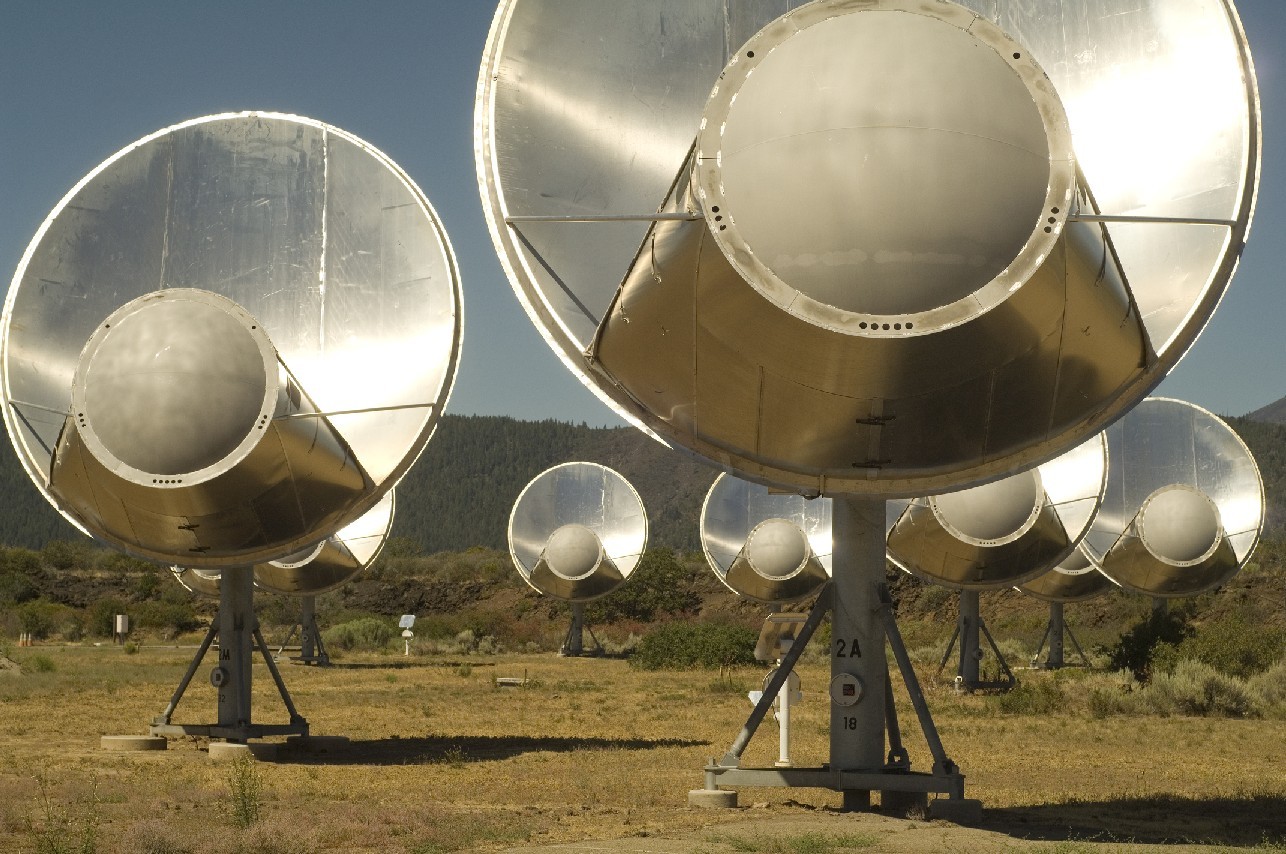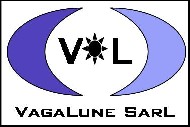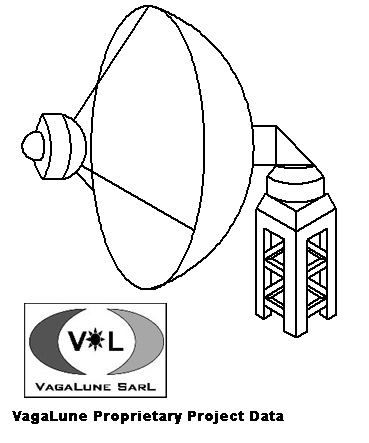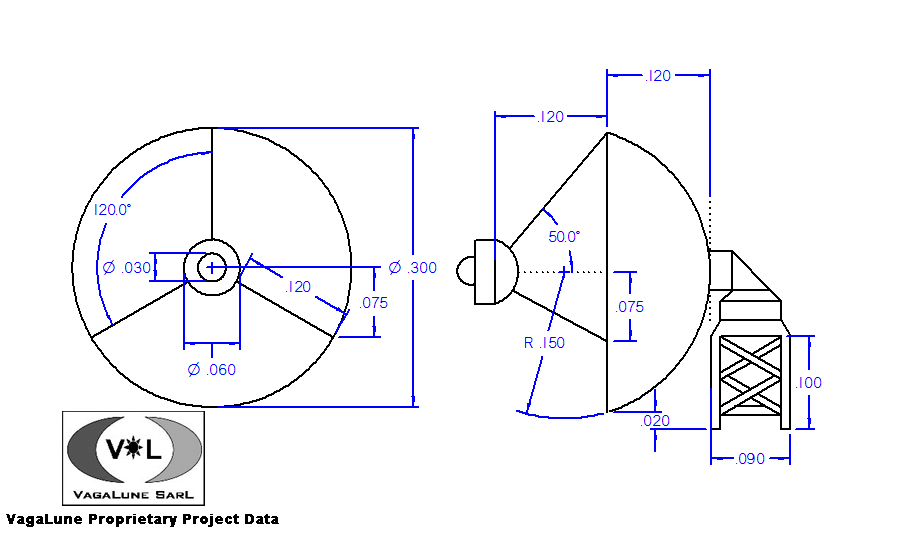| SETI (Search for Extra-Terrestrial Intelligence), as of earlier this year announced that the Allen Telescope Array (ATA) near Hat Creek, CA began collecting celestial data. The antennas used, 42 of the 350 are currently online (Oct. 2006), use an offset Gregorian feed in the 6.1m diameter dishes.

In conjuction with the link budget (See Link) and estimating parameters of the antennae at ATA, we ran a simulator with Matlab code provided by Balanis [Bal:05] to estimate gain patterns, etc based on a series of input parameters. The particular code used works only for a general parabolic reflector, thus the specializations of the ATA (Gregorian offset feed) were estimated in the simulation. To limit extensive design, the antenna to be placed on the Moon Rover would also be a parabolic reflector, though of much smaller size (on the order of 20cm diam). However, because of lack of knowledge on exact dimensions of our antennae and also of the relationship of the input parameters of the Balanis Matlab code, it was not used in our design. |



